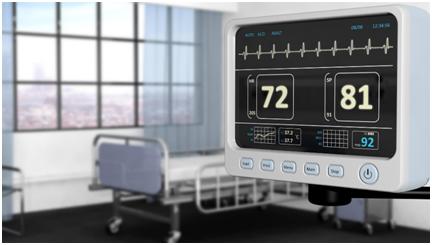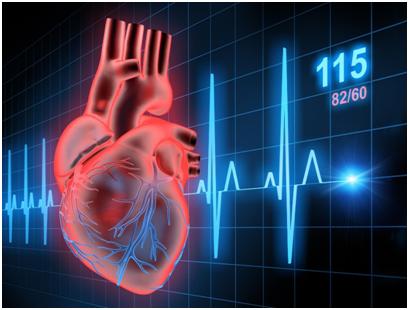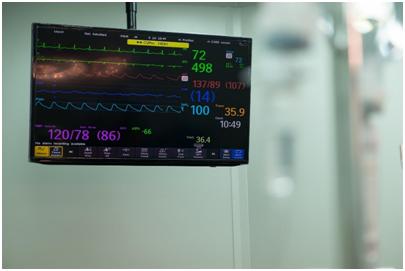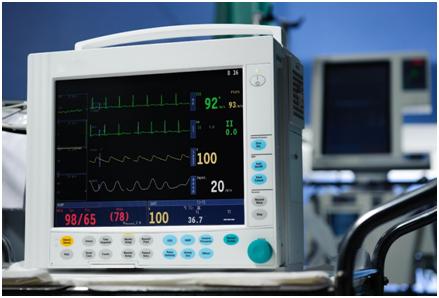|
Tech Developments Make Now an Ideal Time to Invest in a New EKG Electrocardiogram machines, also known as ECG or EKG machines, provide an indispensable diagnostic tool for physicians, allowing monitoring of the heart’s electrical activity. While electrocardiogram machines have been around for decades, the technology continues to evolve, providing greater accuracy and utility to medical professionals.
The new developments in EKG technology, including mobile applications, make aninvestment in a new device the smart move for many medical practices, particularly those currently using older models.
The electrocardiogram is one of the most commonly used medical tests in medicine and is extremely useful in diagnosing a variety of cardiac ailments, including myocardial ischemia, infarction, syncope, palpitations, and more. In addition to detecting heart problems, physicians also use electrocardiogram devices to monitor patient condition during medical procedures, to diagnose the cause of seizures, and for various biotelemetry uses. Thanks to electrocardiogram tests, doctors can detect issues early and carefully monitor patients with ongoing heart health issues. Understanding the latest developments in electrocardiogram machines and their history will help medical practices make the best decision when choosing new devices. Latest Developments One of the greatest advancements in electrocardiogram devices in the past decade has been the development of wearable monitors. 2013 was a watershed year for wearable EKG machines, with many excellent models hitting the market. Portable electrocardiogram devices which integrate with patients’ smartphones provide doctors with more data to draw upon to make diagnoses and monitor patient health.
The technology may also allow patients to leave the hospital earlier, as it provides doctors with the capability to monitor them remotely. Patients can also use the new technology to self-monitor and provide a data-driven report of any changes or adverse events to their physicians.
In the last few years, big advancements have been made in device accuracy and the use of better information in evidence-based medicine. The improvement in device accuracy and the use of information gleaned from new electrocardiogram machines have provided doctors better means of diagnosing and monitoring a variety of cardiovascular ailments, making electrocardiogram devices even more useful than they were before. Another big trend in electrocardiogram technology is the collection of big data. Big data is having a major impact on a variety of industries, and it is little wonder that medicine is also being impacted by this potentially game-changing trend. Modern computing resources provide the health care industry with greater opportunities to gather, sort, and analyze electrocardiogram data from millions of patients. With this data, doctors can examine a variety of things, such as the effectiveness of treatments on patients, how demographic groups respond to treatment, and much more.
For example, Carolyn McGregor, research chair of health informatics at the University of Ontario’s Institute of Technology, used a large volume of electrocardiogram data to
discover patterns in neonatal intensive care, such as how changes in heart rate can indicate infection. The project has given doctors important early warning signs of infection that allow them to intervene earlier and knock down illnesses before they can worsen. The first steps toward developing electrocardiogram devices were made more than two centuries ago. In 1786, Dr. Luigi Galvani recorded electrical activity from dissected muscles. A few decades later, in the 1840s, Dr. Carlo Matteucci, another Italian physician, discovered that an electrical current accompanied each heartbeat of a frog he studied. More than three decades later, Augustus Waller, a British physiologist, developed a primitive precursor of the electrocardiogram using a capillary electrometer and electrodes placed on the chest and back of a person. Waller’s device demonstrated that electrical activity preceded ventricular contraction. At the turn of the century, Dr. Willem Einthoven developed the first electrocardiogram, a device that weighed 600 lbs. Einthoven continued working on his device throughout his life, making it more practical and useful. In 1924, Einthoven was awarded the Nobel Prize in physiology and medicine for his work in developing the electrocardiograph. Work continued on refining the electrocardiogram and increasing its utility to doctors. In the 1940s and 50s, physicians conducted considerable research into improving the leads used by the devices. In 1954, the American Heart Association recommended a standard 12-lead electrocardiogram.
Many of the basic principles of electrocardiography discovered in the early decades of the 20th century remain in use today, although miniaturization and computer technology have made electrocardiogram devices more efficient and useful to medical professionals.
Tips for Purchasing a New EKG Machine There are many electrocardiogram devices on the market, and sales staff from medical device companies often get incentives to push specific devices. Shopping online for an EKG is a good method for finding the best value, but practices that do so have a lot of information they will need to evaluate to make their choice. If your practice is in the market for a new electrocardiogram device, the following tips can help you make the right purchase.

Heart disease remains a major health concern worldwide, as about 31 percent of global deaths in 2012 resulted from cardiovascular diseases, according to the World Health Organization. Here in the U.S.,
more than 610,000 people die from heart disease each year, and the cost of treatment for coronary heart disease, alone, tops $109 billion annually, according to Grand View Research. The ECG is an important device for diagnosing and monitoring illnesses and saving lives. The medical industry spent more than $4 billion on electrocardiogram equipment in 2014, and the market for these devices is expected to grow by 5.9 percent between 2014 and 2023. North America is the biggest market for these devices, representing about 42 percent of sales. For hospitals and clinics in need of new devices, finding a reliable supplier that stocks only the best devices manufactured by the most trusted names in the industry is important. Medical Device Depot stocks a wide inventory of electrocardiogram devices and other medical supplies and equipment. The company strives to provide the best shopping experience for its customers, and highly trained and knowledgeable staff stands ready to answer all questions concerning Medical Device Depot products. Source http://www.grandviewresearch.com/industry-analysis/ecg-equipment-market |





